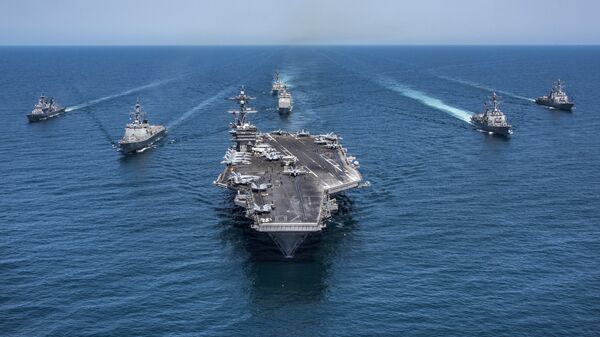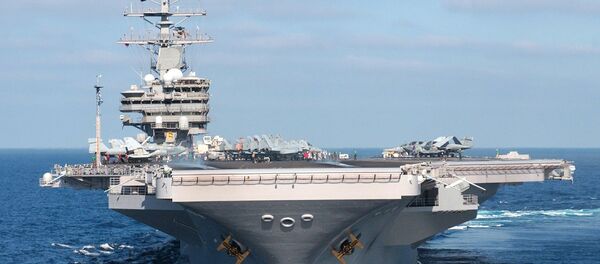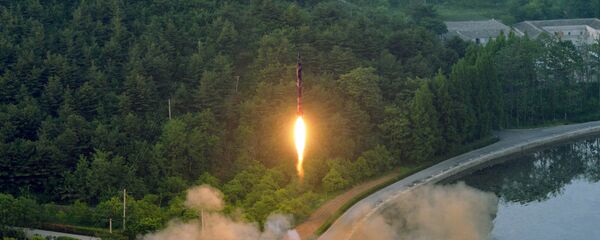Air force exercises will conclude Friday, while maritime exercises are to end on June 3. The aim of the joint drills is to enhance cooperation between US and Japanese military on sea and in the air.
The United States dispatched two aircraft carriers to the Sea of Japan (East China Sea) in the wake of recurrent North Korean missile tests. US and Japanese leaders had agreed 26 May to increase tangible pressure on North Korea.
USS Carl Vinson took part in joint exercises with the Japanese navy and air forces in April staged in the Western Pacific. The supercarrier has been near the Korean peninsula since April where it is supposedly on a mission to restrain North Korea. Pyongyang responded with more ballistic missile tests.
Meanwhile, the Los Angeles-class attack submarine Olympia has made a stop in Yokosuka, Japan as part of its deployment to the Indo-Asia-Pacific region, the US Navy said in a press release on Thursday.
"The Western Pacific deployment is considered the culminating event for a submariner," Olympia's commanding officer Ben Selph, stated. "Olympia's crew is truly excited to be able to operate in this theater, as well as contribute to the strong regional ties with our allies overseas."
The purpose of Olympia's visit is to interact with Japan's Maritime Self-Defense Force. Moreover, the visit also signals the US Navy's commitment to regional stability and maritime security, the release explained. Traveling at a speed of 20 knots, Olympia could sail from Yokosuka to the South Korean port of Busan in approximately 32 hours.
Olympia can perform anti-submarine warfare, anti-surface ship warfare, surveillance and reconnaissance, irregular warfare and mine warfare, the release also said.





